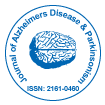Notre groupe organise plus de 3 000 séries de conférences Événements chaque année aux États-Unis, en Europe et en Europe. Asie avec le soutien de 1 000 autres Sociétés scientifiques et publie plus de 700 Open Access Revues qui contiennent plus de 50 000 personnalités éminentes, des scientifiques réputés en tant que membres du comité de rédaction.
Les revues en libre accès gagnent plus de lecteurs et de citations
700 revues et 15 000 000 de lecteurs Chaque revue attire plus de 25 000 lecteurs
Indexé dans
- Index Copernic
- Google Scholar
- Sherpa Roméo
- Ouvrir la porte J
- JournalSeek de génamique
- Clés académiques
- JournalTOC
- Infrastructure nationale du savoir de Chine (CNKI)
- Bibliothèque de revues électroniques
- Recherche de référence
- Université Hamdard
- EBSCO AZ
- OCLC-WorldCat
- Catalogue en ligne SWB
- Bibliothèque virtuelle de biologie (vifabio)
- Publons
- Fondation genevoise pour l'enseignement et la recherche médicale
- Euro Pub
- ICMJE
Liens utiles
Revues en libre accès
Partager cette page
Abstrait
Can Signaling Molecules in Fibroblasts Detect Prodromal Alzheimer's Disease?
Chiara Paola Zoia, Paola Compagnoni, Chiara Bazzini, Adele Ulisse, Elisa Conti, Diletta Cereda, Valeria Isella, Lucio Tremolizzo and Carlo Ferrarese
Ras/ERK, /p-38, /JNK and PI3K/AKT pathways may mediate amyloid-β-peptide toxicity, neuron death and cognitive decline, modulating oxidative stress and inflammation in AD. Although it is a neurodegenerative disorder, AD affects different systemic molecular mechanisms that are present in patients’ peripheral tissues, too. We investigated possible MAPK and PI3K-AKT alterations in fibroblast primary cultures from sporadic AD, MCI and control subjects, testing these molecular pathways as possible AD-related trait markers.
By western blot and phospho-Elisa, we evaluated their epigenetic status and some of their downstream pathways that might be involved in preclinical and early AD stages: the alpha-APP-levels, as a marker of the alpha-secretase activity, the expression of Bax, as an apoptosis and mTOR-autophagy regulator and the phospho-p70S6K status, that modulates protein synthesis, Tau hyper-phosphorylation and mTOR-cell signaling.
While the expression of phospho-ERK1/2 decreased in fibroblasts from mild/moderate AD compared to severe patients’ and controls’ cells, it did not shown difference in fibroblasts from seven sporadic Parkinson Disease patients compared to HC. Moreover, phospho-ERK1/2 expression and AD severity correlated and including MCI-converter patients to AD cases, this statistical significance was further confirmed. The expression of phospho-AKT also increased in the cells of severe AD patients compared to the fibroblasts of patients with mild/moderate AD, MCI and control subjects and it correlated with the disease severity, too. Phospho-p38- and phospho-JNK-SAP Kinases as well as phospho-p70S6K and Bax increased in cells from AD patients but did not correlate with disease severity, while alpha- APP levels decreased in patients’ cells and it only correlated to phospho-ERK1/2 levels in control fibroblasts, indicating the ERK involvement in the physiological metabolism of APP.
Then ERK1/2 and AKT pathways could be suitable to check the disease molecular mechanisms in these peripheral cells from the disease prodromal stage, in particular, ERK-modulation might help to discriminate converter and nonconverter MCI. Furthermore, since fibroblasts show molecular dysfunctions similar to those observed in autopsy brains, these cells might also be useful peripheral targets to investigate and modulate Aβ-related APP metabolism, Tau hyper-phosphorylation and mTOR-cell signaling, preventing the AD progression.
Revues par sujet
- Agriculture et Aquaculture
- Biochimie
- Chimie
- Food & Nutrition
- Génétique et biologie moléculaire
- Géologie et sciences de la Terre
- Immunologie et microbiologie
- Ingénierie
- La science des matériaux
- Le physique
- Science générale
- Sciences cliniques
- Sciences environnementales
- Sciences médicales
- Sciences pharmaceutiques
- Sciences sociales et politiques
- Sciences vétérinaires
- Soins infirmiers et soins de santé
Revues cliniques et médicales
- Allaitement
- Anesthésiologie
- Biologie moléculaire
- Cardiologie
- Chirurgie
- Dentisterie
- Dermatologie
- Diabète et endocrinologie
- Gastro-entérologie
- Immunologie
- La génétique
- Maladies infectieuses
- Médecine
- Microbiologie
- Neurologie
- Oncologie
- Ophtalmologie
- Pédiatrie
- Recherche clinique
- Soins de santé
- Toxicologie

 English
English  Spanish
Spanish  Chinese
Chinese  Russian
Russian  German
German  Japanese
Japanese  Portuguese
Portuguese  Hindi
Hindi